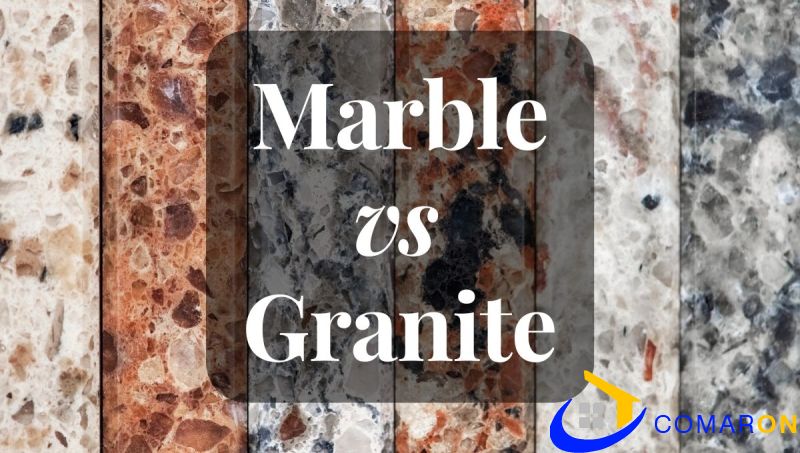Both marble as well as granite are very useful materials for your flooring ingredients. Since these materials have become much popular for kitchen as well as bathroom countertops during the previous decade. Home owners have turned out to be more and more concerned to identify the differences between these 2 natural stones. Numerous home owners wish to recognize which material is appropriate for kitchen countertops, what is favoured for bathroom vanity tops, which stone is worthy for open-air kitchens, in case marble can be applied as kitchen counters, plus so forth.

Image by rawpixel.com on Freepik
Granite originates by solidification as well as cooling of Magma deep inside the earth over an age of millions of years. It is categorized as an igneous rock on account of its source from the cooling down of liquefied Magma. For the duration of the process of heating and at that juncture slow cooling, granite forms as a remarkably firm material.
Granite consists of primarily Feldspar, Quartz which is very solid minerals.
Marble is categorized as metamorphic stone for the reason that it is formed by the revolution of another type of stone known as sedimentary stone. Sedimentary rocks create from sediments in the earth united with buried plant life beneath the earth over a long phase of time. These sedimentary rocks acquire metamorphosed into marble beneath forceful heat as well as pressure. This process includes other minerals into the marble which can give the stone nice-looking colours.
So fundamentally, Marble initiates as limestone as well as converts into marble. Marble primarily involves Calcium Carbonate which is much softer as compared to the constituents of granite.
Appearance
Granite as well as marble has a somewhat related appearance; nevertheless, upon close scrutiny, you can detect precise differences. The natural shade variations that seem in both granite and marble fluctuate between the two stones.
Granite colour variations normally look as flecking all over the stone. Marble colour variations look like colourful veins that spin through the stone.
The natural progressions that form granite as well as marble require a direct association with the overall strength as well as robustness of the two materials. Even if both materials will perish and stay stunning for several years in your home, it’s imperative to pick the precise material for the site to guarantee that injury doesn’t take place.
Granite has a rigidity of Six to Seven on the Mohs scale. It simply resists scratches as well as damage from heat, creating it a supreme substance for kitchen counters both within the house and external. Granite counters will not graze or stain from everyday household doings.
It has a firmness of Three to Five on Mohs scale. It lacks the same toughness as granite as well as it will suffer injury from common kitchen tasks for example cutting. Connection with hot pans as well as dishes may also harm marble. As a surface, it is a more fit choice for low-traffic spots for example bathroom vanities, fireplace environs as well as decorative accents.
Application of marble for kitchen countertops has turned out to be a new trend, particularly the marble mined in Vermont popularly acknowledged as Danby Marble. It has an improved water absorption rate as well as better firmness equalled to the classical marble materials similar to Carrara or else Calcutta. Home owners actually have to be diligent regarding the maintenance as well as stringently follow the closing application routine.
From the time when granite countertops have intrinsic stain resisting properties, they require less repeated sealer application as compared to marble materials. For ideal results, you ought to apply fresh wool of sealant one time a year or one time in three years depending the kind of sealer employed.
Marble needs a diligent agenda of resealing to defend the permeable surface. Reseal marble as a minimum two times each year – more often in case you see water engrossing into the marble in place of assembling on the surface.
To assess granite or else marble to regulate whether fresh sealant is required, put a minor pool of water on the surface. In case the water remains decorated, the present sealant is active. In case the water engrosses into the stone, reapply new sealant.